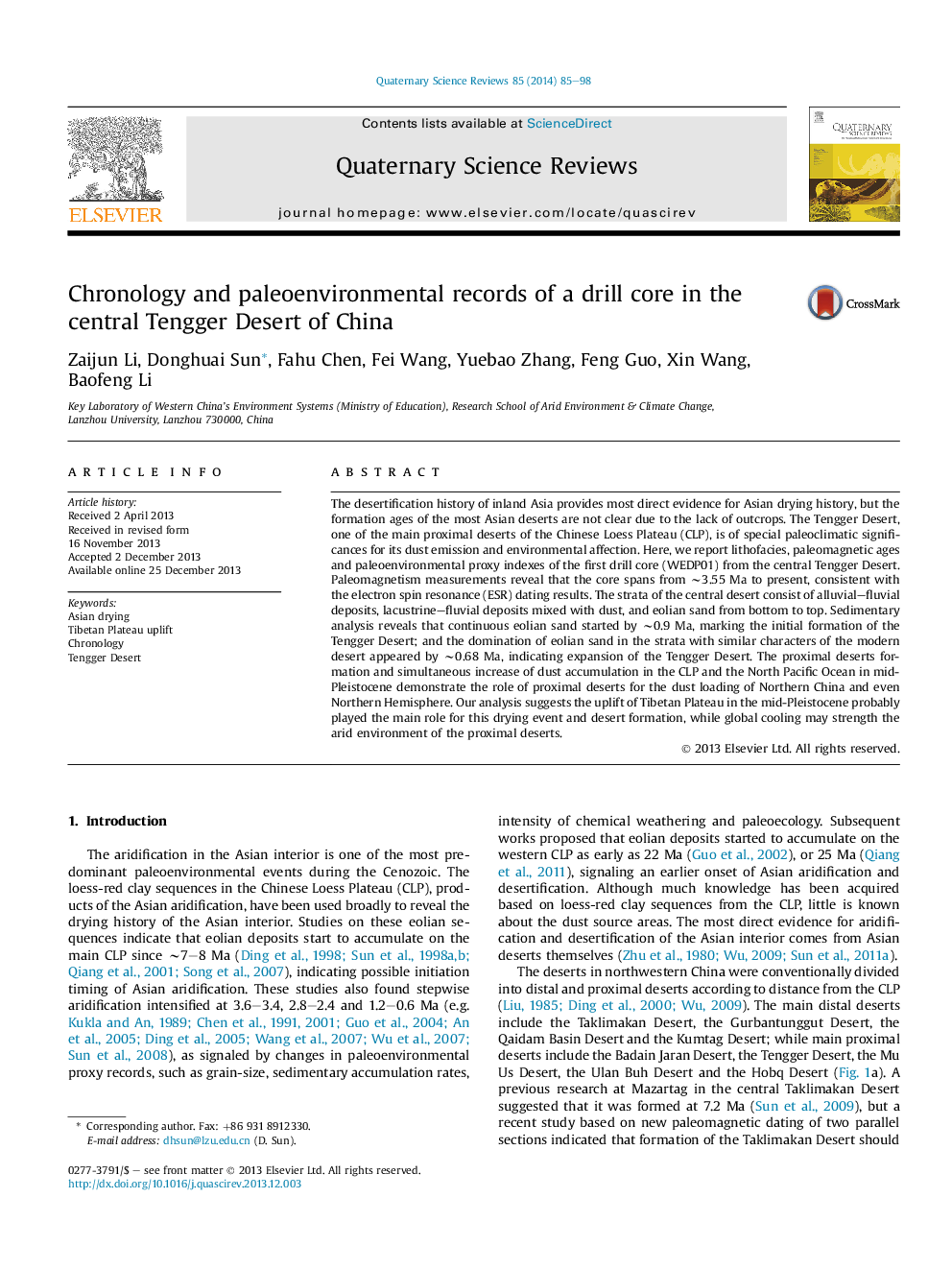| کد مقاله | کد نشریه | سال انتشار | مقاله انگلیسی | نسخه تمام متن |
|---|---|---|---|---|
| 4736694 | 1640849 | 2014 | 14 صفحه PDF | دانلود رایگان |

• Tengger Dessert initially appeared by ∼0.9 Ma.
• Tengger Desert with present characters was formed by ∼0.68 Ma.
• Formation of proximal deserts resulted in significant increase of dust loading.
• The uplift of Tibetan Plateau directly drove the proximal deserts formation.
The desertification history of inland Asia provides most direct evidence for Asian drying history, but the formation ages of the most Asian deserts are not clear due to the lack of outcrops. The Tengger Desert, one of the main proximal deserts of the Chinese Loess Plateau (CLP), is of special paleoclimatic significances for its dust emission and environmental affection. Here, we report lithofacies, paleomagnetic ages and paleoenvironmental proxy indexes of the first drill core (WEDP01) from the central Tengger Desert. Paleomagnetism measurements reveal that the core spans from ∼3.55 Ma to present, consistent with the electron spin resonance (ESR) dating results. The strata of the central desert consist of alluvial–fluvial deposits, lacustrine–fluvial deposits mixed with dust, and eolian sand from bottom to top. Sedimentary analysis reveals that continuous eolian sand started by ∼0.9 Ma, marking the initial formation of the Tengger Desert; and the domination of eolian sand in the strata with similar characters of the modern desert appeared by ∼0.68 Ma, indicating expansion of the Tengger Desert. The proximal deserts formation and simultaneous increase of dust accumulation in the CLP and the North Pacific Ocean in mid-Pleistocene demonstrate the role of proximal deserts for the dust loading of Northern China and even Northern Hemisphere. Our analysis suggests the uplift of Tibetan Plateau in the mid-Pleistocene probably played the main role for this drying event and desert formation, while global cooling may strength the arid environment of the proximal deserts.
Journal: Quaternary Science Reviews - Volume 85, 1 February 2014, Pages 85–98